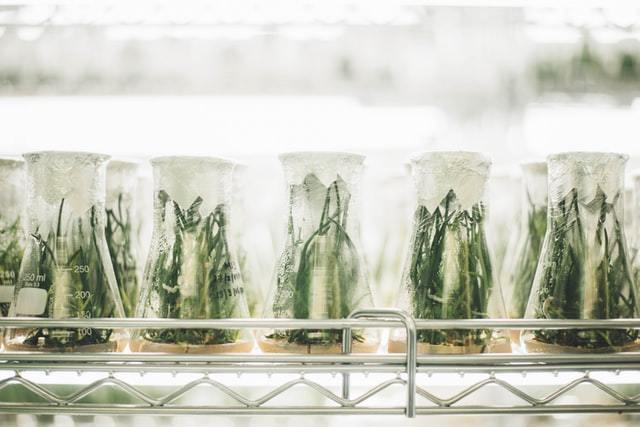Legalization has meant a brand new era for cannabis research. Cannabis farmers now have the baking of universities, laboratories, and research centers to help push this miraculous plant's limits of potential.
New research about the best conditions to grow cannabis may be destined for commercial growers, but there are nuggets of knowledge buried in these lab reports for the at-home grower as well. What can the small, indoor grower learn from the newest cannabis cultivation publications? It turns out, a whole lot.
Ideal pH Level for Cannabis
If you've been growing for a while, pH, at some point, has likely come into play. pH is a measurement of acidity or alkalinity on a scale of 1 to 14. The lower end of the scale represents more acidic substances, and the higher number describes more basic.
When it comes to growing cannabis, specifically, acidic substrates (soil or soilless growing mediums below a pH of 5) facilitate rapid micronutrient absorption. Nutrient absorption is a benefit, but only up until a point. If the pH is too acidic, plants will pull up enough nutrients that they become toxic.
At the other end of the spectrum, a highly alkaline medium will decrease the rate of absorption. With intensely alkaline soils, plants starve to death as they struggle to pull nutrients from the substrate.
New research from North Carolina State University sought to better understand how pH fluctuations in substrate impacted cannabis growth. Is 6.0 to 6.5 the ideal pH level that most growers cite? After the team of researchers witnessed a wide variety of pH levels across several commercial grows, they took this back into the laboratory to put pH to the test.
The North Carolina team's results demonstrate that cannabis has a much more extensive pH range than previously thought. The researchers were able to grow cannabis, without any negative consequences, between 5.0 to 7.5 on the pH scale. Remember 6.0 to 6.5 is a highly restrictive target typically cited by growers, so this is a measurable increase in pH range.
Key Takeaway: The ideal pH range for growing cannabis is much more lenient than previously thought. As advised by the Cannabis Business Times piece on the subject, growers should aim for a growing medium with a pH of 5.5 to 6.5. This new range also allows for a bit of wiggle room on each of the extremes.
Dialing in Phosphorus Supplement for Cannabis
More research from North Carolina State University has helped answer a few questions about the need for phosphorus (P) in cannabis cultivation. Phosphorus is a macronutrient and makes up the 'P' within the NPK equation on a nutrient label. Cannabis plants use this fundamental nutrient for photosynthesis, metabolism of other nutrients, and assisting with nutrient uptake. It is essential for cannabis life.
Many cannabis-specific products target clone, vegetative, and flower stages of growth with different formulas of NPK. The phosphorous-focused research set out to test how much P cannabis needed during its life stages.
Once again, this team followed several lines of interest about P levels. For starters, they determined that excess P supplied just before flower did not boost yields, nor improve quality. This addresses an age-old debate among growers about supplementing additional P just before transitioning into bloom.
Secondly, they determined that cannabis requires a baseline of P throughout the plant's lifespan. It is especially important during the first half of the plant's life, as cannabis seems to store P as a reserve and then reach into these reserves during bloom.
Key Takeaways: Despite what some growers may suggest, additional P before bloom does not benefit the flower. The bare minimum concentration cannabis seems to need is between 8 ppm and 15 ppm of P. They hypothesis that an ideal concentration is likely between 15 ppm to 20 ppm supplied regularly. Still, they need to put this through further tests.
Stress is Important for THC Levels
In 2019, the peer-reviewed journal Frontiers of Plant Science pulled together an exhaustive meta-analysis of what we know thus far about cannabis cultivation. They paid particular attention to what environmental factors increased yields (both per plant and per meter) and what improved THC levels.
According to their assessment, a slightly stressful growing environment helps stimulate increased THC levels. Cannabis naturally produces THC as a stress response to environmental conditions (heat, light, pests, and more). Growers would be wise to gently pressure their cannabis plants to increase stress levels without undue damage. Achieving a level of stress that encourages THC production, but doesn't otherwise inhibit growth is a delicate balance.
Key Takeaways: Based on the research, a few ways to safely increase stress (without unmanageable damage to plant health) include using slightly smaller containers or crowding plants. Growers can also experiment with higher temperature and light intensity, but too high, and these can cause irreparable damage. Aim for the higher end of the recommended range, but do not push the limits. As many growers have demonstrated, you can achieve this with LED grow lights.
Tips form Cannabis Cultivation Research
Scientists are finally looking at the science of growing cannabis. This new wave of research benefits the big players, but the results help the small-time growers as well. Many of the key findings are just as useful for people growing cannabis at home, as companies pumping out thousands of pounds of bud. The little tweaks and slight adjustments suggested in the research can help improve yields and plant health, with minimal effort.





